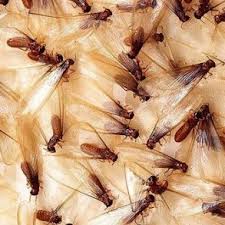 Initially developed by the military and used for aircrafts, spray foam usage in homes started in the 1970s and picked up in the 1980s. As such, homes built during this period often use the material, but homeowners are typically unaware of its existence. Most homeowners think spray foam and insulation keeps their homes warm and ignore any downsides. Spray foam works wonders for energy efficiency because the chemicals quickly expand that insulates and seals any air gaps, along with providing a moisture barrier.
Initially developed by the military and used for aircrafts, spray foam usage in homes started in the 1970s and picked up in the 1980s. As such, homes built during this period often use the material, but homeowners are typically unaware of its existence. Most homeowners think spray foam and insulation keeps their homes warm and ignore any downsides. Spray foam works wonders for energy efficiency because the chemicals quickly expand that insulates and seals any air gaps, along with providing a moisture barrier.
However, spray foam yields a serious downside that largely goes unnoticed. Unfortunately, spray foam can hide termite activity. In fact, according to PCT, the sealing nature of spray foam hides leaks and moisture that homeowners would normally notice and address. Additionally, and more importantly for some, the hiding of underlying structural issues may attract termites and their infestation could go unnoticed until it is too late. For example, PCT shared a scary anecdote of spray foam hiding termite activity.
“Tim Kendrick, president of the Alabama Pest Control Association noted that if termites food sources, they’re going to use it to go all the way to the roofline and pulled a 30-pound Formosan termite nest from the wall of a spray-foamed attic. The pests damaged eight rooms in the slab house before they swarmed and were found.”
So, what presents the dangers of termite damage with spray foam?
Spray Foam Obscures a Termite Infestation
By nature, spray foam offers a dense, spongy composition, which should act as a deterrent to termites. In fact, in theory, spray foam should act as some sort of termite protection (particularly when made from polyurethane or another synthetic material). Yet, while the foam itself won’t attract termites, it doesn’t block them either, which presents a conundrum. Instead, pest control professionals find termites chewing or tunneling through, nesting inside and forming colonies inside spray foam.
The insulation likely covers the presence of termites. As a result, they have an opportunity to nest and feed on wood beams and supports or potentially thrive on some moisture. Additionally, even back when rigid cellulose insulation lined a home’s perimeter (vs the more modern spray foam), termites would still eat through the insulation or continue consuming any structural supports behind the foam. As such, unless the tubes and tunnels went from one side to the other, the material essentially shielded the destruction – until it was too late.
This issue isn’t exclusive to older insulation methods either. During construction, spray foam is applied at least 3/4 of an inch thick. Unfortunately for homeowners, termites burrow in holes as small as 1/16 in diameter, which means their presence goes undetected. In either case, the termite infestation progresses from your foundation and basement to other, more visible parts of your home.
Spray Foam Creates a Pathway
In addition to hiding an infestation, spray foam also creates a pathway for termites. As termites progress through a home’s structural timbers, there is a direct pathway to window sills, frames and doors. Additionally, cellulose spray foam, along with other insulating materials composes several common aspects of your home, including drywall and paper. Consequently, the termite infestation may spread up the interior, to the attic or through your walls and offers termites with a pathway to continue flourishing in your property.
When to Worry About Termites and Spray Foam
Generally, the Formosan termite, a type of subterranean termite present the most concern for homes filled with spray foam insulation. Known for its insatiable appetite and large colony size, the Formosan termite presents unique challenges because they are know to create substantial structural damage in a short amount of time. Additionally, Formosan termites build and inhabit nests above ground near or within the infested structure and can feed, reproduce, and survive for months and even years.
Hence, the issue with spray foam because the insulation provides a barrier that inhibits proper termite inspections. However, insulation offers homeowners with tremendous energy savings and the concern about termites remains a much smaller concern among property owners. While the risk of unknown termite damage is real, there are precautions homeowners can take. For example, as you update your home for winter, consider consulting a pest control professional to rule out any potential risks with termites and your spray foam insulation. If you suspect termites are tunneling through your spray insulation, reach out to Eliminate ‘Em’s termite control professionals for a full assessment. To learn about our services or to schedule an appointment, give us a call today.


